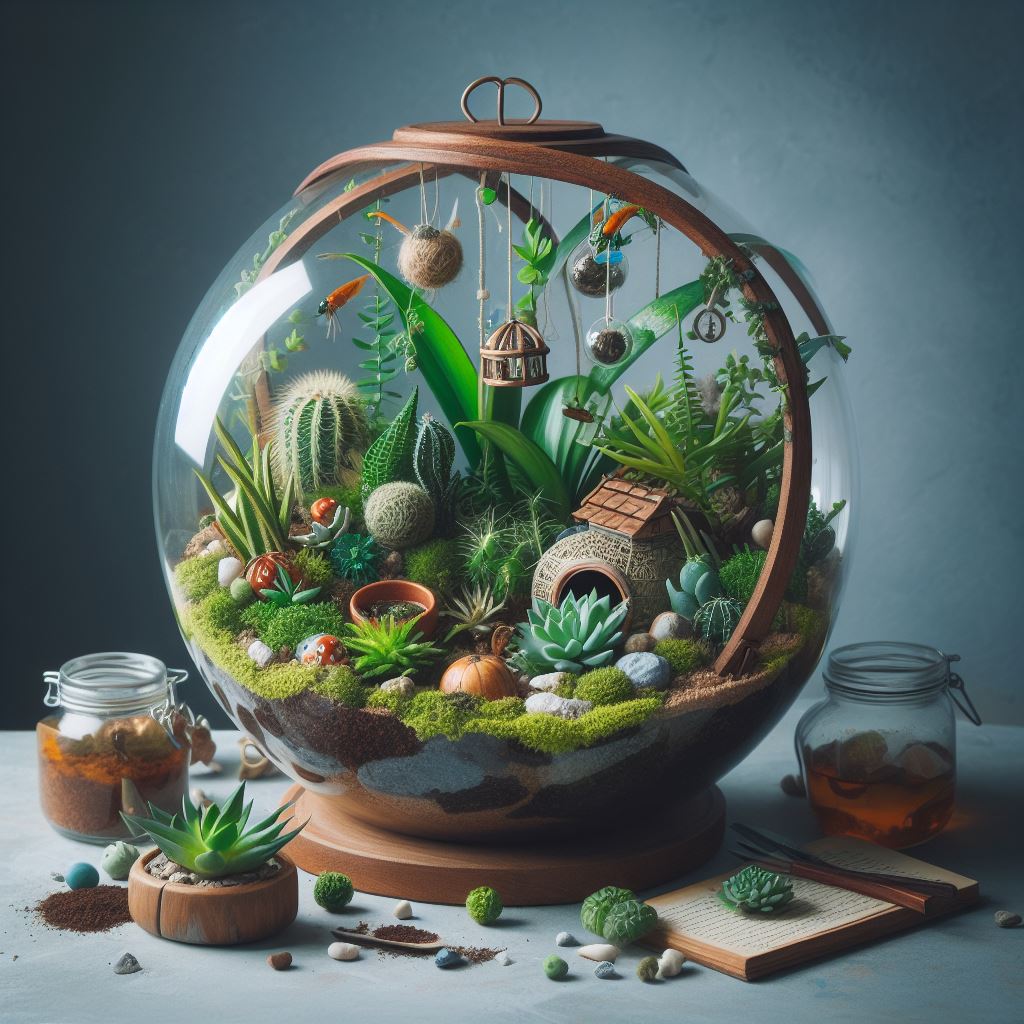Creating a terrarium is just the beginning of a journey into the miniature world of indoor gardening. Like any garden, a terrarium requires care, attention, and sometimes a bit of troubleshooting to keep its ecosystem thriving. Whether you’re a seasoned gardener or new to the terrarium scene, this guide will equip you with the knowledge to maintain your terrarium’s health and address common issues that might arise.

Terrarium Maintenance: Keeping Your Garden Thriving
Regular maintenance is key to a healthy terrarium. Here are some essential tips to keep your miniature garden in top shape:
- Light: Ensure your terrarium receives adequate light, but avoid direct sunlight which can overheat and harm the plants. Artificial grow lights can be an alternative for rooms with low natural light.
- Watering: The watering needs of your terrarium depend on its type. Closed terrariums retain moisture and require less frequent watering, while open terrariums need a more regular check. Use a spray bottle for a gentle touch, and always aim for moist, not soggy, soil.
- Pruning: Trim back any overgrown plants to prevent them from overcrowding the space. This encourages healthy growth and maintains the aesthetic of your miniature landscape.
- Cleaning: Keep the glass clean both inside and out to ensure maximum light penetration. Wipe down with a soft cloth to avoid scratches.
Troubleshooting Common Terrarium Issues
Even with the best care, you might encounter issues. Here’s how to troubleshoot common terrarium problems:
- Overwatering: Signs include mold growth, foggy glass, and plant rot. Address this by removing affected plants and soil, improving ventilation, and adjusting your watering routine.
- Underwatering: If plants look wilted or dry, they might not be receiving enough water. Increase watering frequency slightly, being careful not to overcompensate.
- Mold Growth: Mold thrives in moist, stagnant conditions. Improve air circulation by opening the terrarium for a few hours and remove any visible mold with a gentle wipe. Consider incorporating a layer of activated charcoal to prevent future outbreaks.
- Pest Infestations: Tiny pests can sometimes find their way into your terrarium. Treat infestations with neem oil or remove affected plants to prevent spreading.

Seasonal Care Tips
Your terrarium’s maintenance needs can change with the seasons. Here’s how to adapt your care routine throughout the year:
- Spring and Summer: This is when your terrarium plants are most active. Monitor closely for growth and water needs, and prune regularly.
- Fall and Winter: Plant growth slows down during cooler months. Reduce watering frequency and ensure your terrarium is not placed in drafty areas.
Advanced Maintenance Tips for Enthusiasts
For those looking to dive deeper into terrarium care, consider these advanced tips:
- Soil Refreshment: Every year or two, consider refreshing the soil to replenish nutrients. This is also an excellent opportunity to rearrange or update your plant selection.
- Water Quality: If possible, use rainwater or distilled water to avoid the buildup of minerals that can cloud the glass and harm plants.
Conclusion
Terrarium maintenance and troubleshooting might seem daunting at first, but they’re essential aspects of the terrarium hobby. With regular care, attention to environmental needs, and a bit of troubleshooting know-how, you can ensure your terrarium remains a vibrant, thriving ecosystem. Remember, the key to success is observing and responding to the needs of your miniature garden. Happy gardening!
